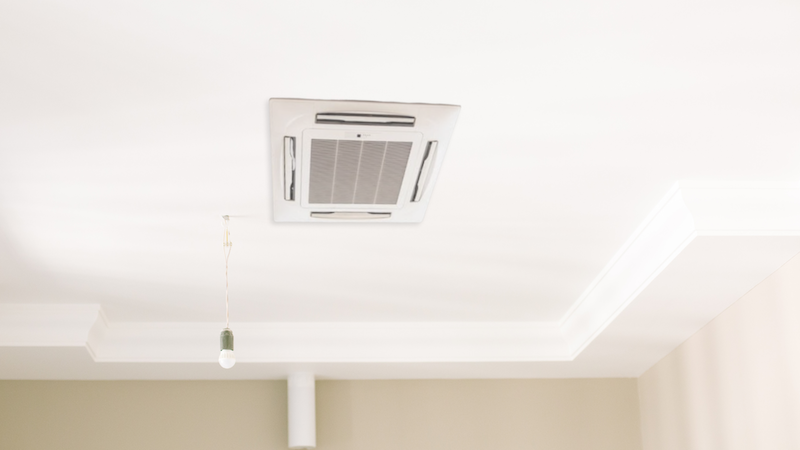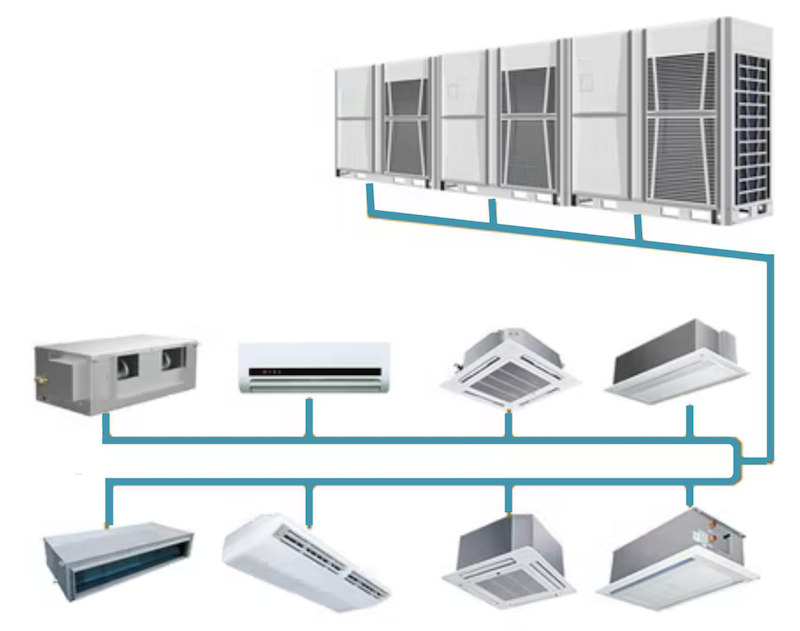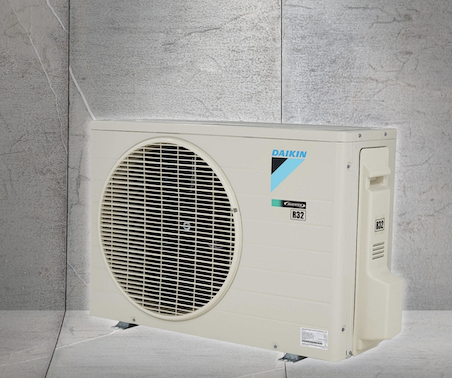
Photo by micheile henderson on Unsplash
Choosing a heating, ventilation, and air conditioning (HVAC) system for a new building project or a major renovation always involves a lot of big decisions. This choice is important because it directly impacts the comfort of the building’s tenants, operational efficiency, and significantly affects costs in the long run. On a commercial or industrial scale, the two most common AC system options considered are Central AC Systems and VRV (Variable Refrigerant Volume) or VRF (Variable Refrigerant Flow) AC Systems.
So, which option is the best fit for your project? To help you make the right call, let’s analyze the basic differences, advantages, and disadvantages of both systems.
What is a Central AC System?

When we talk about Central AC, we’re usually referring to systems that use one large central unit (like a chiller) to produce cold water or cold air. This is then distributed throughout the building via a network of water pipes or ductwork (air ducts). Temperature control in these systems is typically centralized or done for large zones.
- Advantages:
- Ideal for very large, open areas needing relatively uniform temperatures.
- Based on historical experience, the initial installation cost might be lower for very large-scale projects with stable cooling demands.
- Having centralized control makes overall building management easier.
- Disadvantages:
- Less flexible for independent temperature control in each individual room or small zone, like in hotels or apartments.
- Energy efficiency can decrease significantly when only a small part of the area needs cooling (partial load).
- Ductwork installation can be complex and takes up space.
- There’s potential for energy loss during the distribution process through pipes or ducting.
Getting to Know VRV/VRF Systems

VRV/VRF systems are an evolution of multi-split systems. This system uses one large outdoor unit that can connect to many indoor units (could be dozens) through a network of refrigerant pipes. The key feature of this system is its ability to control the amount of refrigerant flowing to each indoor unit variably, allowing it to adjust precisely to the cooling demand in each zone.
- Advantages:
- High Energy Efficiency: Very efficient because they only circulate refrigerant and use power as needed in each zone. Inverter technology allows the compressor to work at partial capacity.
- Individual Zone Control: Each indoor unit (for one room or zone) can have its temperature and operating mode (cool/heat) set independently.
- Design Flexibility: Allows for very long refrigerant pipe runs and a wide variety of indoor unit options (cassette, duct, wall mounted, etc.) within one system, making it easy to adapt to complex building architectural designs.
- Relatively Simpler Installation: Reduces the need for extensive ductwork compared to conventional air-based central systems.
- These systems perform well at partial load.
- Disadvantages:
- Though the initial investment cost per cooling capacity might be slightly higher compared to the most basic central systems, this is often compensated by energy savings and easier installation in the long run.
- The electronic control system is more complex.
Direct Comparison: Which is a Better Fit for Your Project?
Choosing between Central AC and VRV heavily depends on the specific characteristics of your project. To make comparison easier, here’s a summary of the main differences:
| Aspect of Comparison | Central AC System | VRV/VRF System |
|---|---|---|
| Zone Temperature Control | Generally centralized or for large zones, less flexible | Very flexible, independent temperature in each indoor unit/room. |
| Energy Efficiency | Good efficiency at full load, less efficient at partial load | Highly efficient, especially at partial load due to variable refrigerant flow |
| Installation Complexity | Involves extensive ductwork or water pipes, can be complex | Uses refrigerant pipes, generally simpler and more flexible, minimal ductwork |
| Design Flexibility | Limited indoor unit options, less flexible distribution layout | Diverse indoor unit options, long pipe runs, very flexible for various layouts |
| Initial Investment Cost | Potentially lower for very large/uniform scale historically | Tends to be higher per capacity, but often offset by installation and efficiency |
| Operational Cost | Tends to be higher, especially if usage is uneven across areas | Tends to be lower thanks to high efficiency at various load levels |
| Maintenance | Requires centralized maintenance and distribution network | Requires maintenance of indoor/outdoor units and electronic control checks |
Choosing between Central AC and VRV highly depends on the specific characteristics of your project:
- If every room or zone in your building needs independent temperature control (like in hotels, offices with many meeting rooms/private offices, high-end apartments), the VRV system is generally the right choice. However, if you need uniform temperature throughout the entire area (like a large factory or warehouse without partitions), Central AC might be a good option.
- For significant long-term electricity cost savings, especially in buildings with varying usage patterns across zones (not all areas active simultaneously), the VRV system generally offers higher efficiency (better CSPF).
- If your building design is complex, has many partitioned rooms, or it’s a renovation of an existing building where installing central ductwork would be difficult and expensive, the installation flexibility of the VRV system with its refrigerant pipes is often a more practical and efficient solution.
For very large-scale projects with uniform cooling needs and a very strict initial budget, conventional central systems might be worth considering, although you still need to recalculate the total cost of ownership (including energy operational costs!). However, for many medium to large commercial and residential projects, the total value (efficiency + flexibility + comfort) of VRV is often superior.
Both Central AC and VRV/VRF systems have their own advantages. Choosing the most suitable one isn’t about which is “better” in absolute terms, but which aligns best with your specific project needs, energy efficiency priorities, occupant comfort requirements, and budget constraints.
Making the right decision for your project’s HVAC system requires in-depth analysis and technical understanding. This is where the role of an expert partner becomes vital.
Satake Fimar Indonesia, as experts in commercial and industrial HVAC solutions, is ready to be your partner. We can help analyze your project’s unique needs, compare system options (including Central AC and VRV), design the most efficient and effective solution, and carry out installation with the highest quality standards.
Don’t hesitate to consult your project’s HVAC needs with the experts. Contact Satake Fimar Indonesia now to get professional advice and the best solution!
Consult Your HVAC Project with Satake Fimar Indonesia! WhatsApp: +6282310043646 Website: www.satakefimar.com



